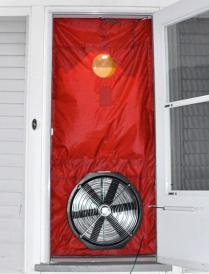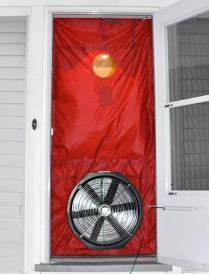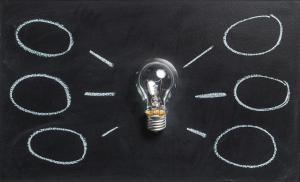
Home Energy Audit: Save Money by Going Green
As energy bills continue to soar, it’s not surprising that so many people are looking to save money on their energy bills. A simple, straightforward and practical place to begin is to have a professional energy audit carried on your property, which the Department of Energy states can save as much as 30% on your monthly utility bill.
The ultimate aim of an audit is to determine how you currently utilise your energy, highlight any inefficiency that may be leading to energy waste and provide practical solutions to improve the overall efficiency of your home.
What does a home energy audit involve?
During a professional whole-house energy audit specialized equipment is used to survey every aspect of your home that may impact energy use and safety. This is extremely comprehensive and includes building envelope diagnostics, ventilation testing, utility bill analysis, safety testing and identification of any moisture problems.

Here is a more in-depth rundown of how an energy audit works along with some primary examples:
#1 Appliance Testing
During the audit, all combustion and electronic appliances are surveyed to analyse their efficiency and current condition, from the information gathered recommendations may be made. For instance, if it’s an old gas oven or wood burning stove, you may be advised to replace it with a more efficient, safer and modern unit. In edition key safety checks, such as carbon monoxide testing may be carried out.
#2 Diagnosing Insulation Issues
Another common cause of efficiency issues in homes is inadequate insulation that can lead to substantial heat loss. In fact, since heat naturally rises as much as a quarter of heat can be lost via the roof in a uninsualted property. Therefore establishing whether your current attic insulation is adequate is an essential part of the auditing process.
Poorly insulated walls are another cause for concern, since a substantial 35% of heat generated can be lost via uninsulated walls. This happens as cold air will naturally diffuse from the heated living space to the cold area outside of your home. This isn’t too much of an issue during the warmer periods of the year, but during winter it can lead to substantial heat loss and increase the demand on your particular heating system. Therefore, by adequately insulating your walls you can slow down this natural process and trap the heat inside your home for longer.
In order to determine the current condition of your homes insulation, the auditor will utilise carry out a visualization inspection and utilize infrared cameras to carry out a thermographic inspection. This will provide information in the form of an R-value, which can expose where insulation is lacking and improvements need to be made.
#3 Identifying Air Leakage
In order to identify any “air leaks” an auditor will carry out the blower door test, which helps them figure out how air tight your home is. This is important since areas that allow too much air to flow can lead to excess drafts – cold air that makes its way into your home; and the loss of heat from your living space.
Once any air leaks have been identified they can then be sealed to block out drafts, this can include a wide range of measures. Common draft-proofing methods include installing draft excluders around windows and doors, as well as filling in holes with expanding foam.
As HeatTalk.com states drafts are simply cold currents of air that are often found in gaps and holes around windows, beneath doors and pipe work. While a certain amount of cold air flow is required in all homes as it helps prevent moisture build up, too much can cause unnecessary heat loss; while too much warm air being lost can lead to overuse of heating appliances.
#4 Lighting Audit
Since the energy spent on lighting represents around 10% of the average US home energy bill, carrying out a full inspection of the type of lighting you use can make a huge difference. Old style lighting can be incredibly inefficient, so establishing where and how you can make the transition to more greener bulbs can make substantial savings. There is a tendency to think that modern bulbs aren’t as bright, but the truth is that there are many lighting options including energy-saving incandescents, compact fluorescent lamps (CFLs), or light-emitting diodes (LEDs). Having more control over the brightness and use of your lighting can also make a big impact on your energy use, so timers, dim switches and other sensors can help too.

#5 Energy Modeling
A key part of the auditing process is called energy modelling, where the auditor will show you the current efficiency of where you are starting from and then calculate the upgrade you would expect to experience after implementing different methods.
This is sometimes achieved by utilizing a computer based tool known as whole-Building Energy Modeling (BEM) and from this a lot of information is provided about qualification for certain tax credits, code compliance and green certification.
Final Words
A comprehensive energy audit carried out by professionals can provide a myriad of detailed and useful information. Equipped with this new knowledge you can make huge changes to your homes efficiency and as a result can prevent energy waste and save a lot of money in the long run.

